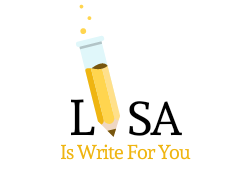From the many forms of writing that are available to choose from, your creativity in either form is what will set you apart from the rest and your creative writing skills and abilities will be essential in your journey.
What Is Creative Writing?
If you are going to do anything, it is important to learn and understand your craft fully and this line of work is no different. We have gone over a number of things but now it’s time to dive deeper into this field to learn about the many different writing styles that are out there. Maybe being a book writer is not all that you want to be. Maybe essay writing is more up your alley, or blog writing or even freelance writing! Whatever your writing choice is, I will help you get there because anything is possible. When you hear the term, creative writing, it is basically that in a nutshell.
This form of writing is stereotypical of any writings that fall under the fiction and non-fiction categories. This also includes poetry, biographies and short stories and just as the term creative suggests, this form of writing allows you to use your imagination and lets you be you when writing. Allowing you to show a part of yourself through words. Don’t forget; be sure to use your creative writing prompts to help get you started if you find yourself stuck! The other end of this spectrum of writing would be your typical professional, academic or journalistic forms of writing.
Four Types Of Writing Styles
Depending on what you are wanting to relay to your audience will determine which writing style will fit your end goal. There are four main types of writing styles, expository, descriptive, persuasive, and narrative so let’s take a deeper look to determine what you are wanting to do.
- Expository– This is a writing style in which the author is wanting to explain or inform the reader about a specific subject.
- Descriptive– This style of writing is not to hard to explain or understand by its name alone. This style of writing’s intention is to describe something to the reader using vivid details along with imagination. The purpose is to paint a picture through words and make it come to life to the reader.
- Persuasive– Have you ever wanted to convince someone of something? Well, this style of writing is trying to do just that; its purpose is to persuade the reader to see the writers point of view or to agree with his or her’s opinion on a particular subject.
- Narrative– This writing style is by far my favorite! The narrative writing style allows the author to tell a story that can be either fact or fiction, so the skies are the limit for this category!
Now that we have covered the different writing styles and the importance of understanding them, you can also see that each of these categories is also considered to be forms of creative writing so let’s continue to dissect even further.

When To Use Expository Writing
Remember, this form of writing is used to explain a subject, normally without expressing the author’s opinion. This is common in essay writing or how-to articles where the reader is only concerned with facts and wishes to be informed on a particular subject. An example of this would be an article written on how to mount a television or a piece on the new burger that Burger King is rolling out for Halloween. With that said, you would use expository writing in:
- How-To Articles
- Scientific Writing
- Technical Writing
- Recipies
- Textbook Writing
- Business Writing
- Factual News Articles or News Stories
When To Use Descriptive Writing
When you want to describe a character, a destination or maybe even a function that you attended, this is when you would want to use this type of writing style. Don’t be afraid to use as much detail as you want to, remember, the reader wants to feel your words so detail is a good thing! Be as specific and descriptive as possible. Take this sentence for example: “The car sped away in the sun.” Well, for a reader like myself, that would be kind of boring and I would not be interested in reading that book for much longer if that was all my senses would get.
Instead, use descriptive words to bring the reader in to feel as if they are in the car that is speeding away, or is on the side of the street watching it speed away. You want your vision to come to life so turn a boring sentence into a vivid and inviting one like this for example:
“The shiny, dark blue BMW 330 went from zero to fifty as the light turned green, leaving all traffic behind as the bright afternoon sun beamed off the shiny new chrome rims as it disappeared from eyesight through the thick traffic.” Even if you are not a poet, if you writing is descriptive enough you may be mistaken for one. The goal for this writing style is to let your reader hear, see, feel and even taste what you do and with that said, you would use descriptive writing in:
- Poetry
- Journal Writing
- Diary Writing
- Descriptive Fiction
- Environmental or Nature Writing
When To Use Persuasive Writing
Persuasive writing is the complete opposite of expository writing. Instead of facts, persuasive writing is opinions of the author and the goal is to convince the reader to see things his or her way. This writing style is filled with biases, judgments, personal opinions, arguments to plead the author’s viewpoint, justifications and reasons why something is or should be a certain way.
A great example of this type of writing is editorial articles, especially with the news and politics of today. Every day we see stories in newspapers and different segments in the news and with certain news anchors trying to convince the public to form certain opinions on politicians, the president, laws, bans, etc., based on their own personal views.
The author’s point is to take a stand and wants their audience to take a stand with them and ask that something is done about a certain situation, also known as call-to-action. You would use this type of writing in:
- Letters of Recommendation
- Advertisements and Take Action Today Advertisements
- Editorials
- Complaint Letters
- Cover Letters
- Book Reviews
- Music Reviews
- Movie Reviews
- Restaurant Reviews
- Ad Campaigns
- Persuasive Essays
When To Use Narrative Writing
This writing style is used when wanting to tell a story and then answers the question of, “What happened?” This writing style can be both factual or fictional, if fictional, the story will be solely from the author’s point of view because it is the author that will create characters and dialogues that will play out the story as the author wishes.
The story may be written in first person narration if the author chooses; meaning, the story is written from the viewpoint of the character. The possibilities of a fictional narrative can be endless being that it can go as far as the author’s imagination. If factual, the author’s purpose is to write a story on actual, real-life events such as biographies or memoirs.
There are four basic parts to a story and the goal of a narrative is to engage your reader from beginning to end; starting with a solid introduction to captivate the reader, the introduction of your characters, which you may choose to have main characters as well as supporting characters, which are typically called minor characters.
The plot is an essential part of a narrative, this is going to be the events that unfold and if written correctly, this is going to be the thing that keeps the reader stuck to the book to see what happens next. The conflict will be the problem that arises in the plot that the character(s) must solve by the end and how the character solves or overcomes the conflict of events is the theme, which is the takeaway or the message in which the author is wanting to relay. You would use this type of writing in:
- Novels
- Poetry
- Short Stories
- Autobiographies
- Biographies
Story Writing and Creative Writing
Stories have been around through the beginning of time and will more than likely be around far after you or I am around to enjoy them. Story writing is nothing more than a series of events that can be either fiction or non-fiction, in other words; factual or nonfactual that are linked together.
Most, if not all stories share a common similarity which is; most stories have three main sections; a beginning, where the characters are introduced along with the main character and his/her dilemma. A middle, where the plot starts to take form and some of the action begins. This is also where the main character may face a few struggles.
The last part of a story would be the ending that will show the reader what happens to the characters and how or if they were able to overcome whatever their obstacles and issues were, especially the main character who will either win or lose that battle. As you see, story writing simply plays out a series of events and situations that the characters must work through.
As far as characters, most stories typically have at least two. A protagonist; which is the hero of the story; someone the reader is rooting for and an antagonist; the hostile character in the story, the person that is typically against the protagonist.
Story writing, just like any other form of writing requires the writer’s knowledge of English grammar as well as a bit of creativity. Yes! Creative writing and story writing goes hand in hand and the better your creativity, and writing skills, the better the story is sure to be!
Today, there are three main types of storytelling style writings and we will dig into each one, so no matter your writing style or genre of your writing, there is a style that will certainly fit your needs, so let’s keep moving and take a look at each type.
- Novel: A novel can be described as a fictional work of art that is composed of 60,000 words or more. Typically, most novels are between 80,000 and 150,000 words in length. Unlike a short story, a novel, because of its length needs, or should be more thought out and planned. Let’s take a look at why. Due to the fact that this form of story writing has more characters, a longer time in which the story can take place which can be months, years, or even generations; along with the fact that a novel, unlike a short story may have multiple plots and subplots, these are the reasons why this form of story writing should be more thoroughly planned.
- Short Story: A short story can be described as a fictional work of art that is composed of 20,000 words or less, typically, a short story will consist of 1000-2000 words, much different than a novel. Any writings under 1000 words are called… you guessed it, a short short story. Short stories usually do not consist of a large cast of characters but should have one main character and because this form of story writing is short, the timeframe of the story should try to be limited to a course of a few days or at the most a few weeks with only a single plot.
- Autobiography/Biography: This style can be categorized as life writings. Why, do you ask? Well let’s examine first an autobiography; this style of writing is when a person tells their personal life events first hand, detailing a certain part or all of their life, yet just like a biography, it is important not to bore the reader with every single detail; instead, summarize important and interesting events, they do not need to know everything. A biography, on the other hand, is when a person’s life events are studied and written by another person, so as you see; either person can be to the storyteller. Normally, the lengths of both types of works are about the same as a novel but of course, could differ from person to person. One main thing to think about when writing an autobiography and biography is the privacy of others. Being that this type of story writing is about personal life events, it is sure to include others so one should be mindful of that to avoid any liabilities that may come with this style of writing.

Conlusion
Whether it’s blog writing, essay writing, story writing or writing a recipe, we have now gone over the different writing styles and when and how to use them. It is important as a writer to understand all of these different styles to ensure you are able to understand what you are writing and if that is the correct writing style for your audience based on what they want to read.
The next step is to test your grammatical skills, if you plan to write anything, you must first understand and have some knowledge of how to write correctly. I could jump straight to how to publish a book but that would not help you or do your career any justice; if your grammar and understanding of the dos and don’t of English grammar is not up to par, then all you will ever do is just……write.




